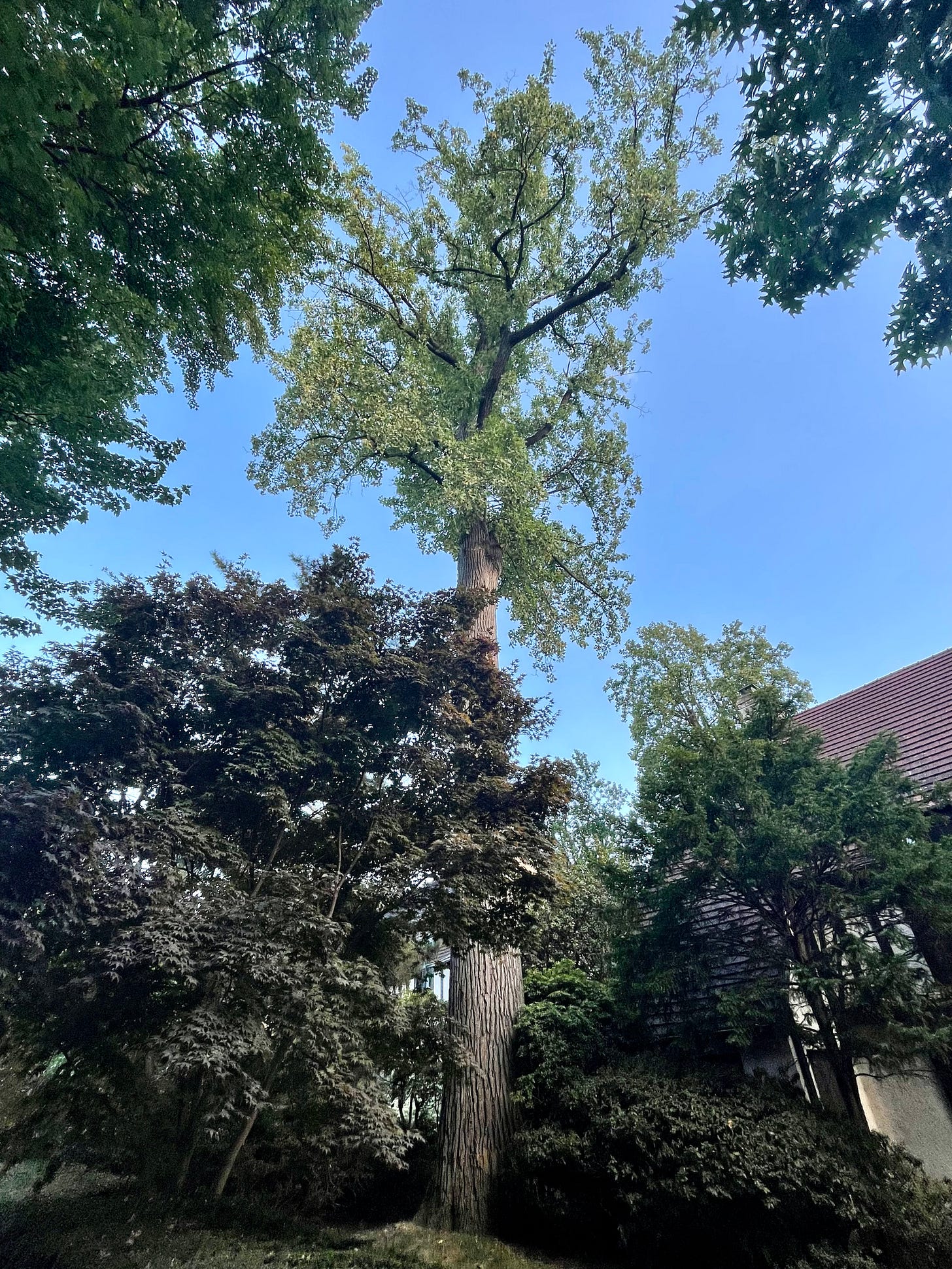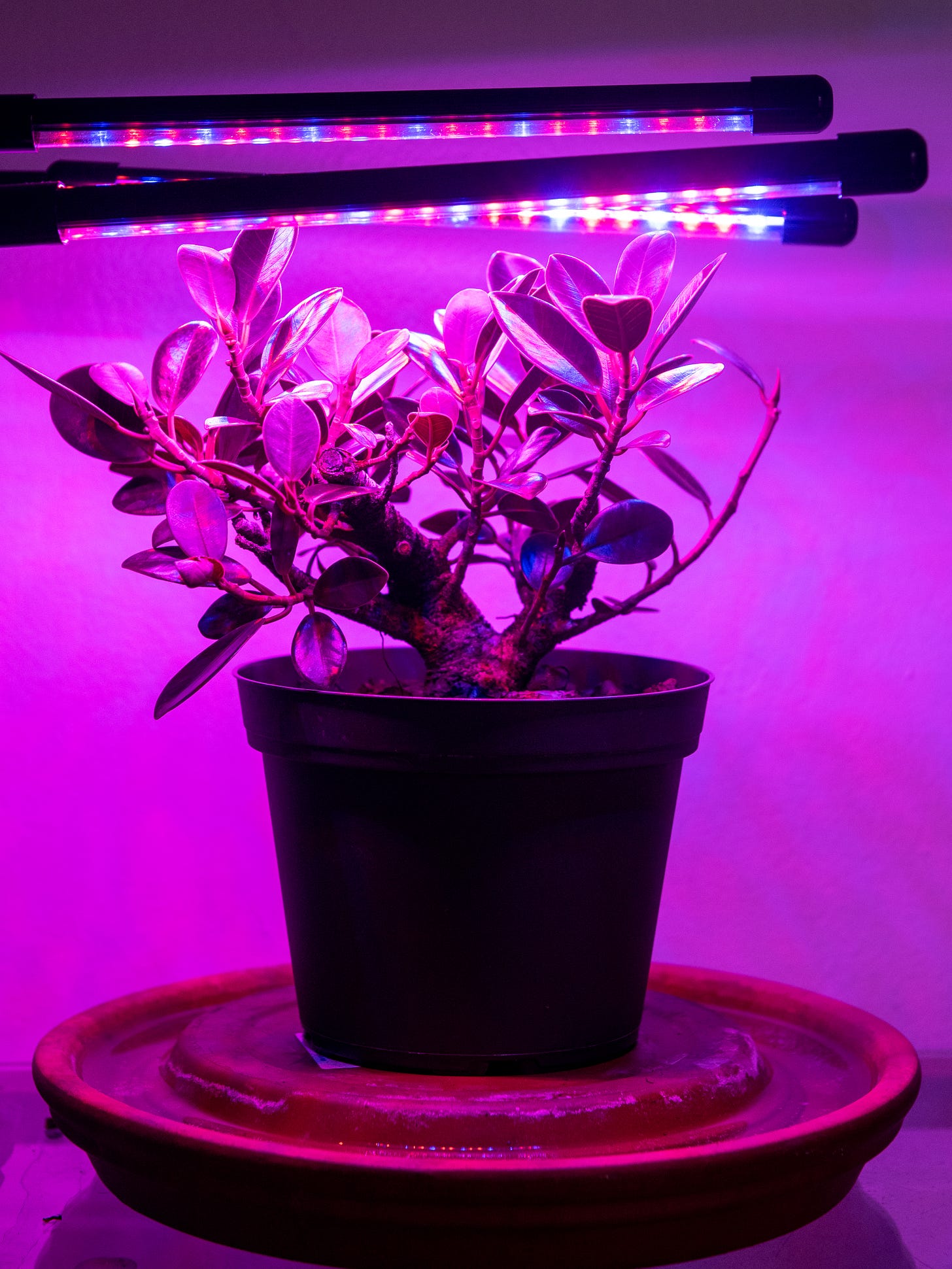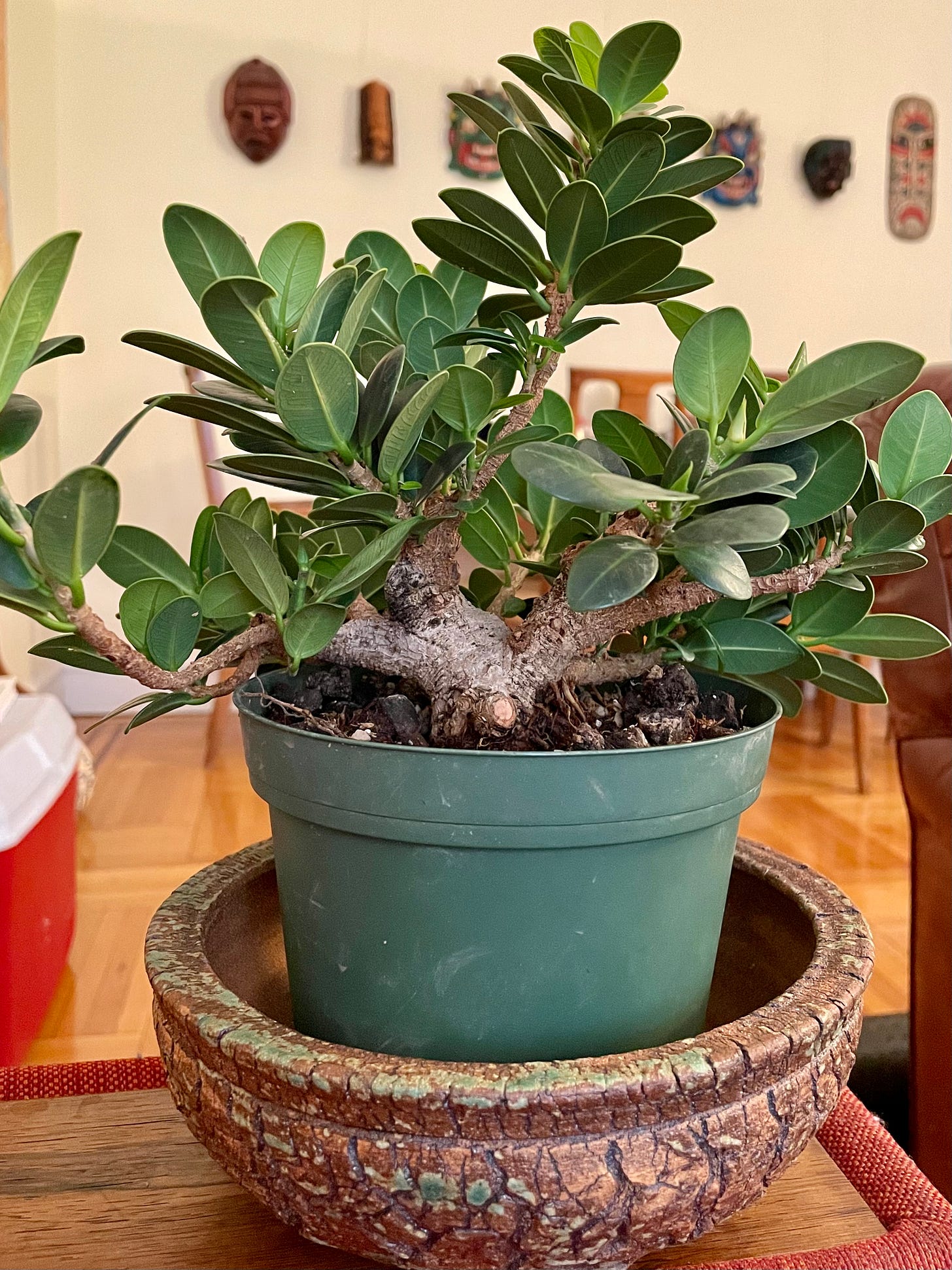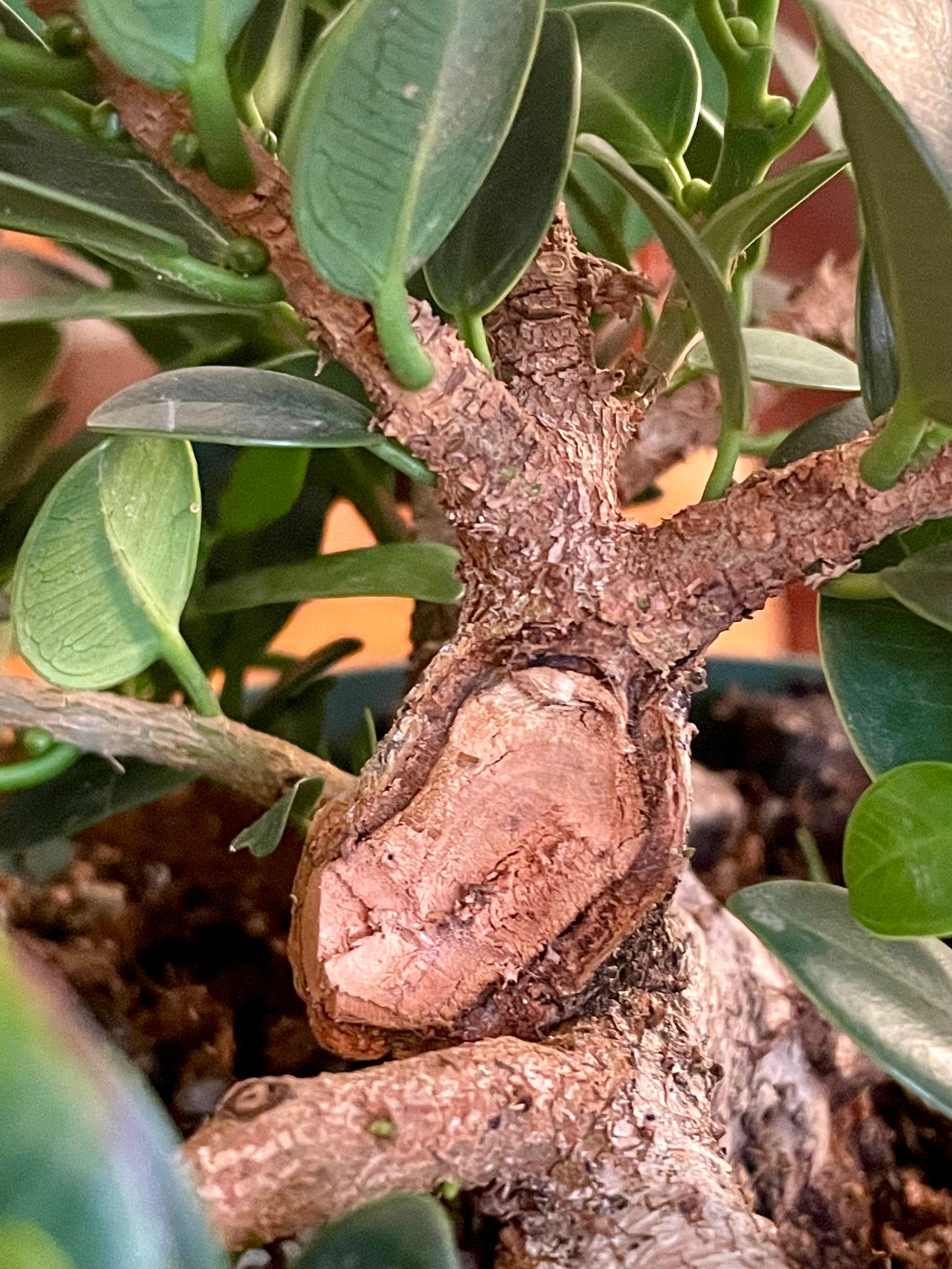My trees still have a couple months before they enter winter dormancy; fortunately bonsai is all about planning ahead. This is good. It’s nice to have an excuse to think of fall chores during the alleged beginning of fall in New York.
Normally I’m preoccupied with how warm it feels. These days, fall doesn’t really begin in the city until late October. Maybe this time the lesson will stick to my brain: it’s good to have reasons to be grounded to the earth.
I’m watering my trees less. Indoors and out. Shorter days slow photosynthesis, which slows water loss. It’s easy to drown a tree growing in organic soil during this adjustment period.
The temperature under the bright LEDs in my subtropical zone hovers around 80 degrees by day, though it’s beginning to cool at night. I have two olives, two pomegranates, an osmanthus, and a tea plant that all need convincing to hibernate inside my apartment over the winter. Last year I succeeded with a hardy boxwood and maple, so my confidence is high. Then again, these subtropical species may require more finesse.
Trees prepare for dormancy when the days get shorter and less light is available. I’m simulating this by adjusting my lights’ timer to follow the changing sunrise and sunset times. The LEDs will be a nice companion when I decide to eek a few more hours of daylight when it’s pitch black at 5pm.
My tropical trees are slowing down too, but just by a hair. They get 16 hours of 300 watt LEDs every day, year-round. Come to think of it, New York City pre-war apartments may be the perfect indoor growing environment for tropical trees like figs. The swampy summers yield ample humidity in my kitchen, which like most New York kitchens lacks air conditioning. (If you live here and have a window AC in your kitchen, please email me and tell me everything about your life.) Come winter, all the brick, asbestos, and lead in the walls insulates my kitchen well, keeping in not just tropical temperatures, but enough humidity to make the trees happy.
This is how my first indoor tree, a fig, looked last September.
Here it is after a recent trim. The canopy had grown so dense the leaves were choking each other out. Now there’s room for more air circulation, and the reduced foliage puts less strain on the tree’s root system. Which is a good thing, because I just trimmed away 90% of that root system. This ficus had a girthy taproot growing straight down. It and all the roots attached to it needed to be removed if this tree is ever to develop the radial surface roots of a proper banyan.
The tree freaked out on me after the repot. Dropped some leaves while others yellowed, though fewer than I expected. It’s already growing new roots all around the front where I trimmed the entire root mass. It should be ready for a training pot next year: that’s a short, squat nursery pot in bonsai proportions, but typically wider and deeper than a proper ceramic bonsai pot, to encourage healthy growth.
It’s a busy fall for this fig. It’s started to heal over a chop scar and is still pushing new buds on every branch, all while rebuilding a root system more or less from scratch.
This time last year, I was fretting over where my temperate trees could live after their eviction from my fire escape. Now I’m almost a year into a mutually beneficial arrangement with my pals at The Queensboro. Last September, I had one indoor tree under crummy lights and had no idea how to keep it happy. Now I have close to 20, growing in two custom rigs of my own design, and by the standards of indoor cultivation, they’re thriving.
It’s a busy fall for me, too. After months of medical malarkey I’m finally scheduled for shoulder surgery next week. I’m told to expect four to six weeks of recovery, but then, with two working arms, I should be ready to get back out into the world. I’m overdue to meet some redwoods.
So while most of my trees slow down for the year, I’m speeding up. Me and the fig. And indie pop singer Mitski, together against the world.
Tree reading
You all remember Tobin Mitnick, the Jew Who Loves Trees? Apparently the sneak has been working on a book called Must Love Trees: An Unconventional Guide. It’s now available for pre-order. PS, preorder numbers are a critical metric that a publisher uses when deciding budgets to promote a book, so if you like to support authors, preordering at a discount is a good deal for everyone. [Bookshop]
Pine trees make it rain, literally. [Youtube]






